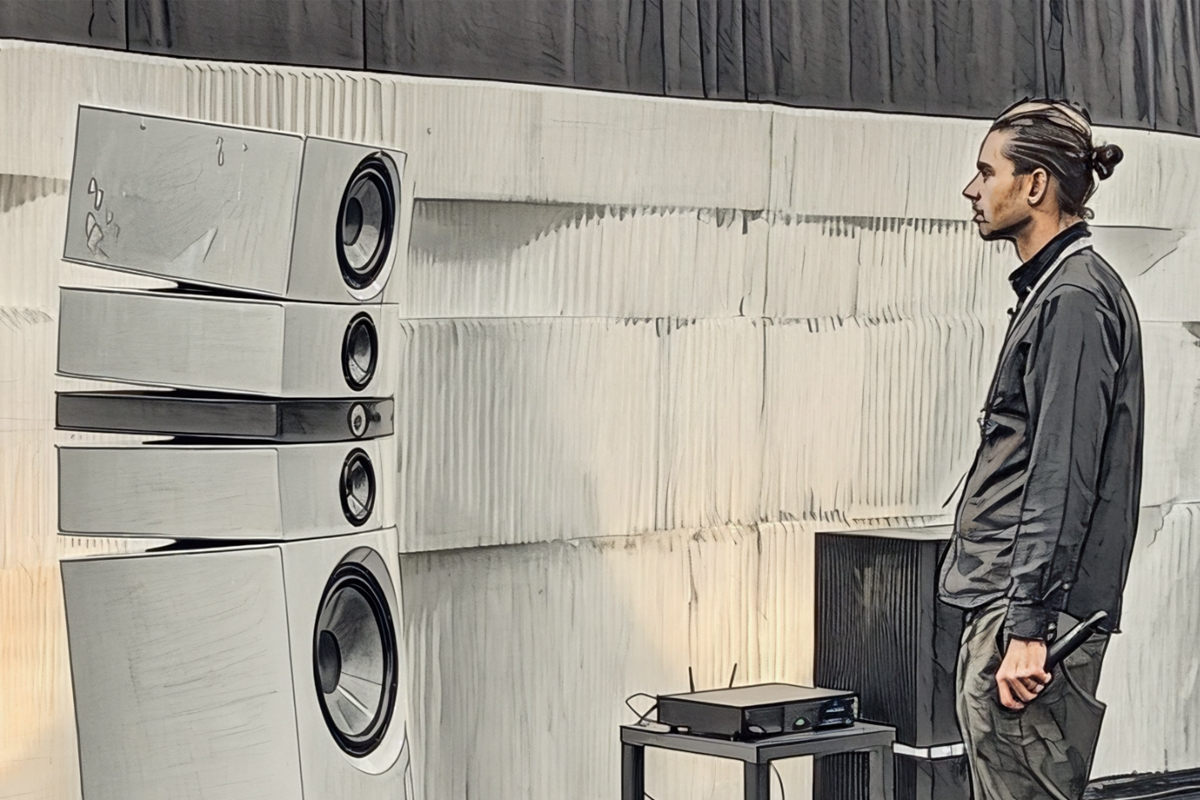As this is my first feature article for SoundStage! Simplifi, and my first contribution as senior site editor, I’m going to kick things off with a synopsis of my hi-fi journey to date. This will hopefully break the ice and provide some context about my philosophy when it comes to our audio hobby.
My journey has been shaped by a quest for excellent sound and has led me to the same principles that guide Simplifi. Over the years, I’ve discovered that my best audio experiences haven’t been defined by the number of components involved or the complexity of the setup, but by how effortlessly music fits into my home and lifestyle. Simplifi’d hi-fi isn’t just about convenience or minimalism; it’s about making high-fidelity music accessible, enjoyable, and harmonious with the way we live. By sharing my story, I hope to illustrate how embracing simplicity and integration can enhance the ways we listen—and how the Simplifi ethos can guide us toward a more joyous and uncomplicated relationship with music.
The beginning
I grew up in England as a Gen Xer, so my story begins in the 1980s. Music was an important feature of life in our household. Though my parents were not musicians, they supported my siblings and me in our musical endeavors. Whether we were at home or out in the car, the radio was usually playing the Top 40. My parents had a small vinyl collection consisting mostly of pop LPs from the Beatles, Simon and Garfunkel, and the Beach Boys, plus some progressive rock like Genesis and ELO. My father was an electronics engineer, and he and his older brother were hi-fi aficionados. This meant that when they got together, (classical) music was getting played—and it was usually pretty loud.
Early experiences
My parents’ living-room hi-fi system was modest, but comprised carefully selected components delivering decent performance for the time. It was based around an NAD 7020 receiver, which was essentially the famous 3020 amplifier with an integrated tuner. This delivered audio from its radio, a Dual CS 506 turntable, or an Aiwa AD-F660 three-head cassette deck to a pair of three-way Celestion Ditton 442 loudspeakers placed in locations that represented a “domestic compromise.”
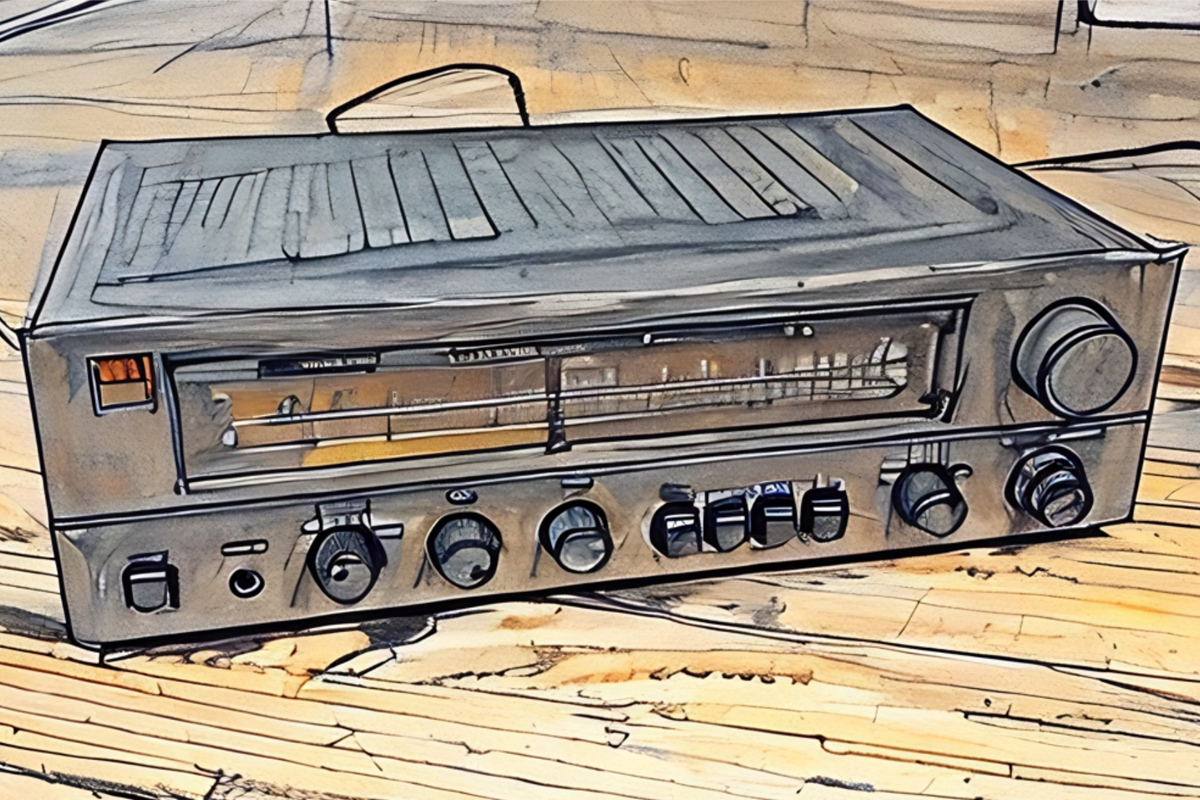
Whenever I got the chance, I listened through my father’s Sennheiser HD 230 closed-back cans as I recorded music from the NAD’s FM section or the Dual turntable onto cassettes. The immediacy and volume provided by those headphones when driven by that receiver were righteous. Looking back, I often wish I could revisit those transcendent experiences. I recall switching back and forth with the tape-monitor control to hear the difference between the source and the sound coming off the tape, attempting to maximize the quality of my recordings using the various settings offered by the Aiwa.
My uncle was more invested in the hobby, with an entire room dedicated to his vinyl collection. His system was built around 12″ Tannoy dual-concentric speakers and Rotel amplification. Even at a young age, I could tell this system surpassed what we had at home in terms of imaging, detail retrieval, and output, though I never got to play around with it. But suffice it to say that early on, I had an idea of what a decent system made possible.
The boombox and the midi system
In terms of my own equipment, I started out with a Philips D8132/05R boombox, which Dad wisely modded for me by adding a headphone socket. Then one birthday, I graduated to what Philips referred to as a “midi system,” an all-in-one turntable, receiver, and twin-cassette-deck unit, with a pair of matching, rather wimpy speakers, and no CD player. I chose it based on its “modern styling,” and I imagine my parents’ hope was that it would keep me from messing with the living-room hi-fi. It didn’t, and was ultimately sold to fund the purchase of my first bass guitar.

It was clear to me that I needed separate components, i.e., “proper hi-fi,” rather than something that just looked the part. In the meantime, a series of cheap Sony Walkman knockoffs helped keep my ears entertained. Mixtapes traded with friends featured the Stones, Hendrix, and the Ramones.
Some interesting discoveries
I received my first Compact Disc, the 1992 UK limited-edition yellow-digipak version of Pearl Jam’s Ten, as a gift from my older sister, even though I didn’t own a CD player. I had, however, just inherited a ten-year-old, silver-faced JVC R-K100 receiver from a cousin. This I hooked up to a pair of large, homemade, mismatched two-way speakers with 12″ woofers that I had discovered in the attic.

They had apparently once served as musical-instrument speakers for one of my father’s friends. They’d also been used for various projects, including testing his homemade valve amplifiers, along with a TEAC reel-to-reel machine and an 8-track tape player that he also kept up there. The speakers were odd looking and weren’t well put together, but their low-end output made up for all of that, so they found a new home in my bedroom. This meant I could rock out to Metallica and Megadeth tapes played on a temperamental Trio KX-4700 cassette deck, also salvaged from the attic.
After spending months poring over reviews in the UK’s flourishing hi-fi press, I zeroed in on the CD player I thought would deliver the best audio quality that my paltry savings would allow. I headed up to Tottenham Court Road in London to haggle for the best deal I could get on a Marantz CD-52 MkII, and I came home happy.
The digital age
Although it hadn’t been a feature on my must-have list, the fact that the CD-52 MkII had a headphone output was a stroke of luck, because it meant I was able to hear what the player was capable of without running it through the mishmash of components I had hashed together. And it did sound wonderful, even though the only headphones I owned were the iconic yellow-foamed Sennheiser HD 414s.
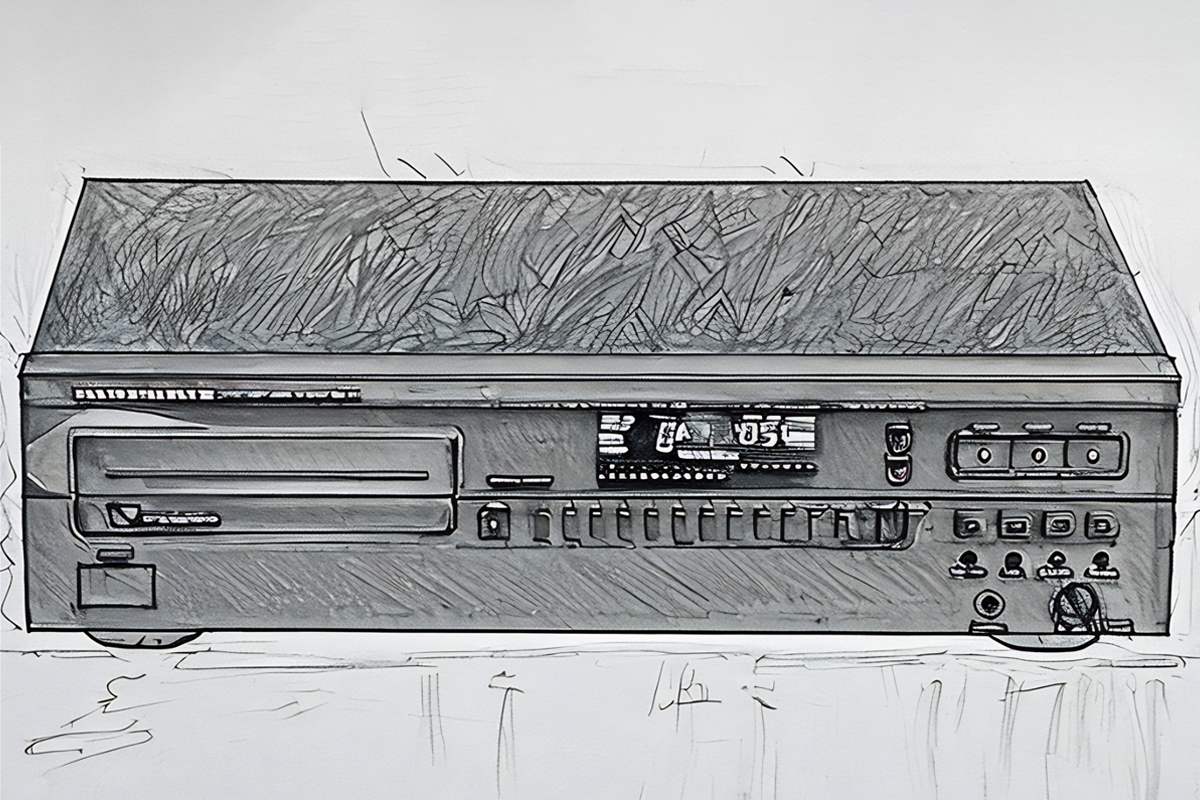
In an odd twist, one of my schoolmates was dating a girl whose father was in the pro-audio business, and by chance he was selling a set of speakers that he had built. I bought them without so much as an audition, as they looked imposing and the price was a steal. They utilized a pair of 12″ woofers (those used in the Bose 302 subwoofer) in ported boxes, plus eight full-range drivers from a Bose 802 built into sealed enclosures. The set comprised four big, heavy black boxes in total and might well have served as a small PA system. What I would come to appreciate, though, was that he had been running these speakers biamped with an active crossover, which was not included. I figured I could build passive crossovers for them, until I priced out what I’d need and realized it was more than I’d paid for the speakers!
Introduction to active systems
I concluded that active crossovers would be a better solution, but the problem was that there was no such thing as a cheap power amplifier back then—and I needed two. They tended to be rack-mounted, heavy, and expensive, and that’s basically what I ended up with: a combination of one V100 and one V200 stereo MOSFET power amplifier made by HH Electronics, sourced from the classified ads. The inputs were fed from a line-level crossover I built on a breadboard. When I hooked them up to the Bose-equipped boxes with some spare lengths of 79-strand speaker cable donated by another friend, I was a happy teenager, despite having spent a lot more time and money than I’d anticipated. It got used to its fullest capacity when my parents weren’t home.
Mini monitors

Soon after, thanks to a summer job, I was able to buy a new Sony TC-K611S three-head cassette deck (with Dolby S!). That went with me to university, but the big “Bose-equipped” speakers did not, for practical reasons. In the end I settled on a pair of Gale Mini Monitors and a Harman Kardon HK610 integrated amplifier to take with me on my quest for a formal audio education. The little two-way speakers would sit on a shelf above my study desk in nearfield configuration, and I would experiment, futzing with them and using Plasticine to sculpt the baffle and fabricate different-shaped waveguides for the tweeters.
Ear training
My studies in the acoustics department at the University of Salford allowed me to spend a good amount of time experimenting in an ITU-specified listening room, with a rotating selection of standmount and floorstanding speakers from respected British brands like Bowers & Wilkins, KEF, and Mission. I regularly participated in controlled-listening tests and made binaural recordings of speaker pairs for rapid comparisons using headphones as part of my final-year project.
Studio sound
After graduating, equipped with my freshly acquired audio knowledge and leftover student-loan money, I decided that active speakers were the way forward. Based on reviews in pro-audio magazines, I bought a pair of Soundcraft Spirit Absolute 4P speakers, which coincidentally were manufactured just up the road from where I lived. On paper they checked a lot of my boxes. Intended for nearfield studio monitoring, the two-way speakers were well specified, with four 100W amplifiers, high-quality drivers from Audax, a diffraction-reducing baffle design, and linear-phase, high-order active crossovers.
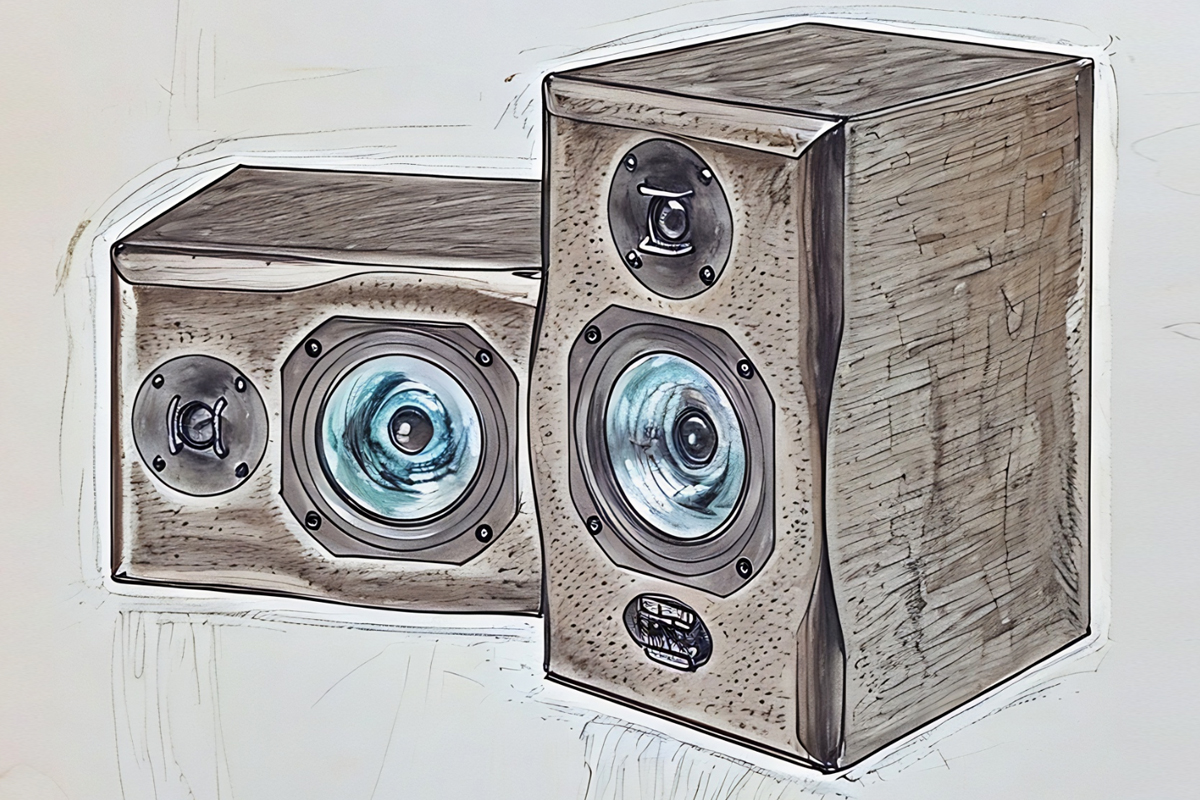
On first listen I was delighted by their astounding soundstaging, dynamic range, and detail retrieval. In fact, they were too revealing for many of the alternative-rock and punk recordings I was (and still am) fond of. But playing Incubus’s S.C.I.E.N.C.E. album, they left a lasting impression, sounding unbelievably huge and detailed. Ultimately, my biggest bugbear was the amount of idle noise (i.e., buzz) the speakers produced. After returning the first set, I was told they were performing as designed. I ended up opening the enclosures and attempting to beef up the smoothing capacitors in the power supply, but the enclosures themselves precluded this, much to my chagrin.
Digital, portable, recordable
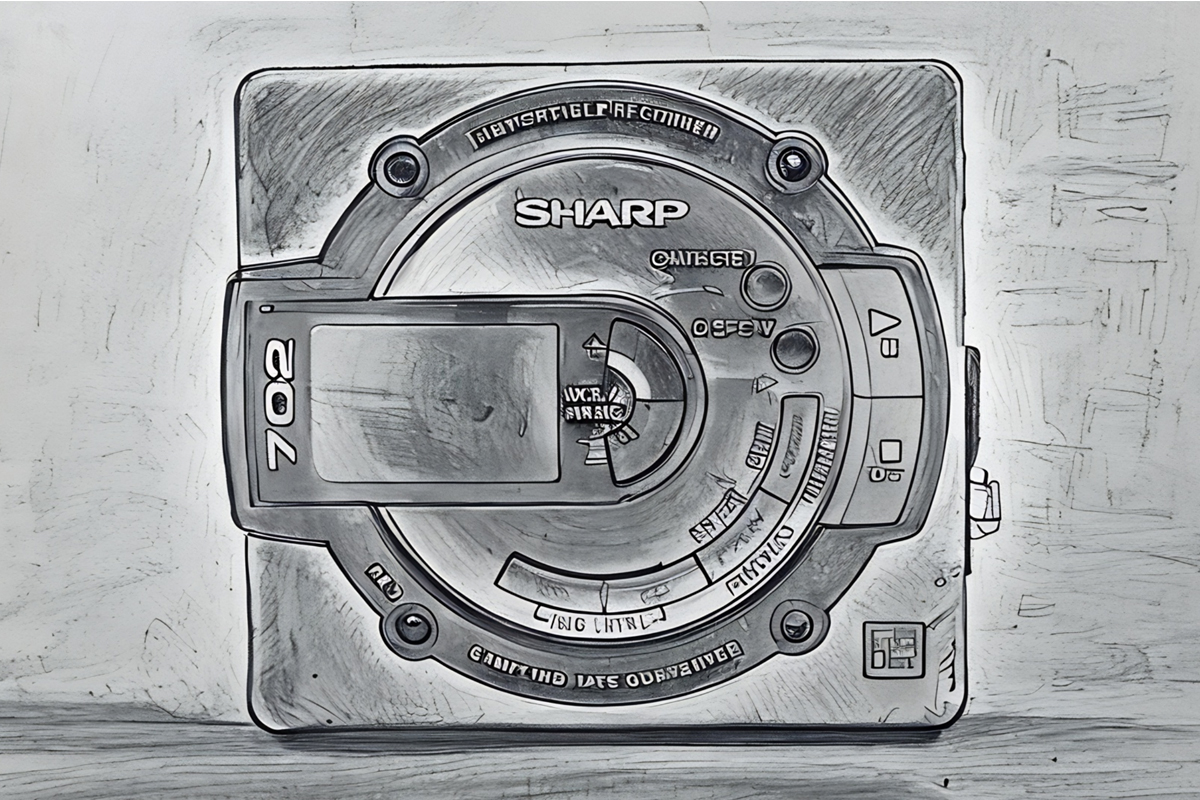
As a perk of my first job in the tech industry, I was fortunate enough to visit Tokyo several times. And on one of my visits to the Akihabara (aka “Electric Town”) district, despite an obvious language barrier, I scored a deal on a Sharp MD-MS702 MiniDisc Recorder. Yes, the same model owned by SoundStage! Solo senior editor Geoffrey Morrison. Although it couldn’t touch the audio fidelity I was used to hearing from my faithful Marantz CD player, it did allow me to play and record digital audio anywhere, and it looked pretty cool in the bargain. I was able to track down a power supply with a UK plug for it, but my CD player only had a coaxial S/PDIF output, and the recorder had an optical S/PDIF in! D’oh!
Industry insider
One of the many things I found fascinating about working on audio systems in the tech industry was learning what was deemed adequate in terms of performance when we were purchasing audio gear for the labs. Even though these were multimillion-dollar facilities, no money was wasted on fancy equipment, esoteric cables, or gold-plated connectors. Signal integrity and audio quality were the priority, but brand names and snake-oil products were never given any time by those on the engineering side, because they offered no demonstrable benefit. Measurements led the way.
Surround sound
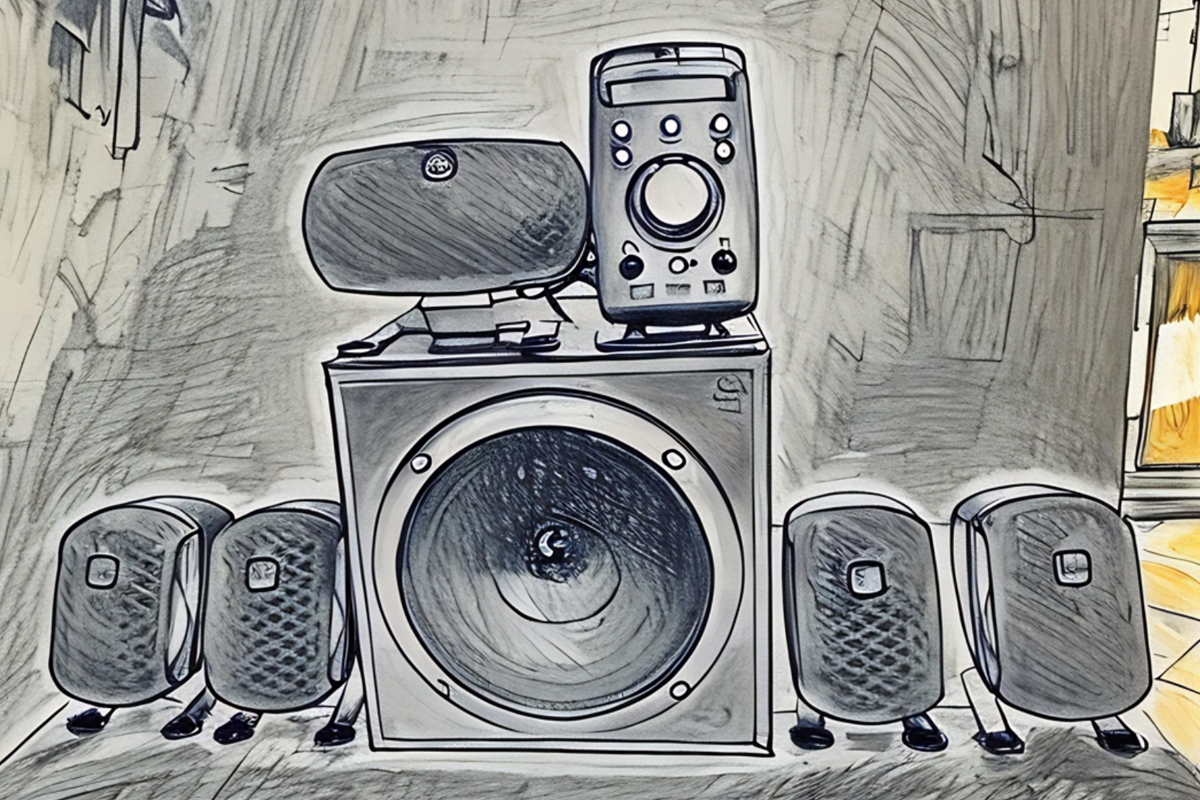
I made a foray into surround sound in my small apartment with Logitech’s Z-680, a powered 5.1 system—ostensibly a set of computer speakers—that was ahead of its time in many ways. The front-end processing module could decode multichannel audio from its digital input (fed by my budget DVD player), accept line-level analog audio for each channel, or apply artificial spatialization. It was novel in that it used matching full-range 3″ drivers for each channel, with bass management directing low-frequency content to the 8″ subwoofer—allowing it to do a good job of presenting uniform timbre across all the speakers. Admittedly, the marketing hype about “THX certification” helped draw me in, although my experience demonstrated that this was pretty meaningless.
The great purge
Most of my disposable income over the next couple of years went into upgrading my music-making and ‑recording equipment. I slowly built a small collection of microphones and recording gear that I would deploy to capture the sound of the band I had been performing with since high school. Soon after that, the band came to an end, and I decided to leave the country.
That led to the great purge, as I sold off everything that could theoretically be replaced down the line, and digitized all my analog recordings. Combined with my carefully ripped, uncompressed music library, most of what I owned at that point was stored in a pile of hard drives. This meant that when I arrived in Canada in 2006, I was effectively starting afresh as far as hi-fi and most other things were concerned.
Starting over

Moving into a brand-new apartment in a new country, I wanted to keep things sleek, simple, and good-sounding. After carefully considering my options, I ended up buying two Slim Devices Squeezebox SB3s (aka the “Classic”—this was right before the Logitech takeover) and two pairs of Paradigm Atom loudspeakers, driven by two Sonic Impact T-Amps (based on the Tripath TA2024 chipset). This setup fit the bill perfectly, providing two independent, wireless zones in my new apartment that could be synchronized while playing files from a cheap laptop, all with a minimal footprint. Nearly 20 years on, I still look back fondly at how well that system worked and how great it sounded, all things considered. Too bad the Atoms’ foam surrounds didn’t last.
Home studio
I continued producing music, and after relying on my trusty Sennheiser HD 580 and HD 280 Pro headphones for a while, I splashed out on a new set of active nearfield monitors, the Dynaudio BM5As. Those little speakers were a revelation. With the pair mounted on custom stands, fed by an Apogee Ensemble audio interface, I felt like I had entered the big leagues of audio reproduction—in a spare bedroom, no less. The sound I was getting was pristine, and I was happy.
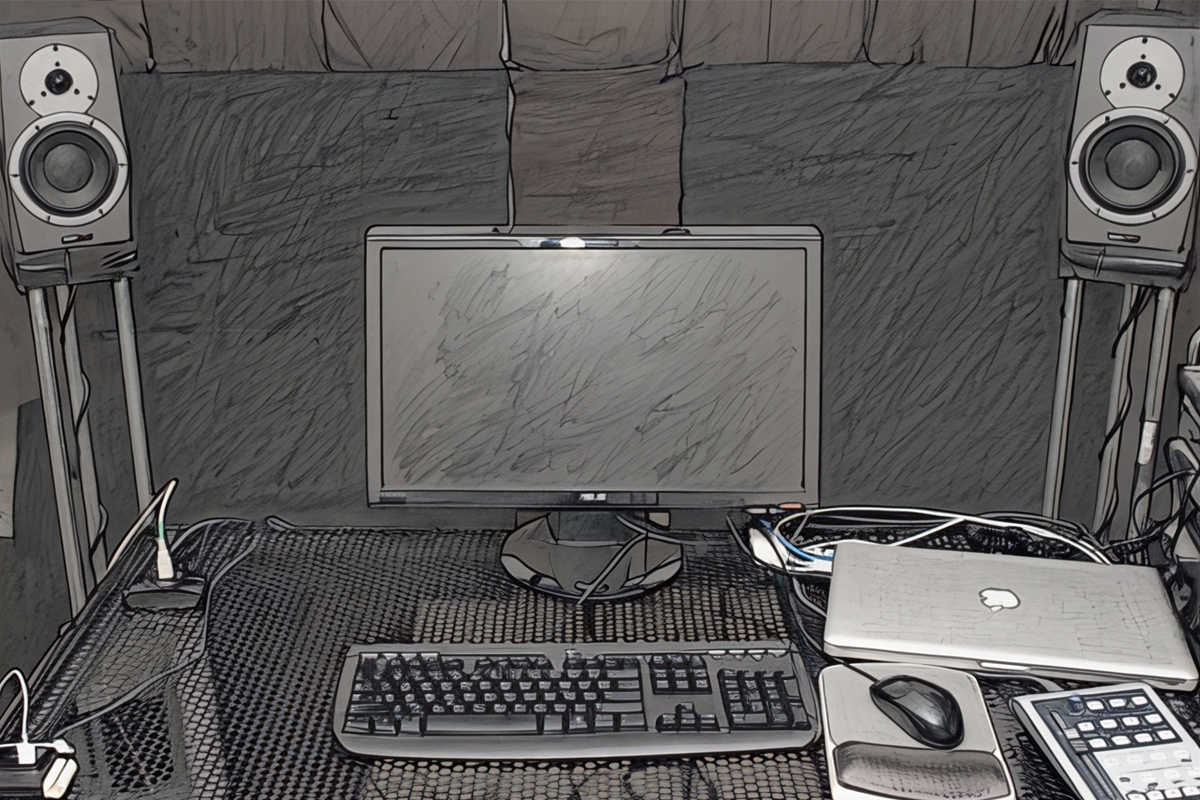
Moving into a bigger space meant things quickly got a lot less neat and tidy. New additions included a home-theater system (KEF iQ1s and an iQ2c, driven by a Yamaha receiver), experimental subwoofer builds, and speakers for the workshop (Tannoy PBM 5IIs) and jam space (Tannoy V8Ps, QSC K8s). In addition to miscellaneous iPod docks and Bluetooth dongles here and there, it all got a little messy, but it was a good time.
Acoustic considerations
Having a larger space allowed me to experiment not just with equipment, but with soundproofing and acoustic treatment too. I went to town with the control room of my basement home studio, pulling down the walls and ceiling and rebuilding the room with floating layers of fire-code drywall sandwiching acoustic insulation, with several feet of acoustic treatment inside of the room.
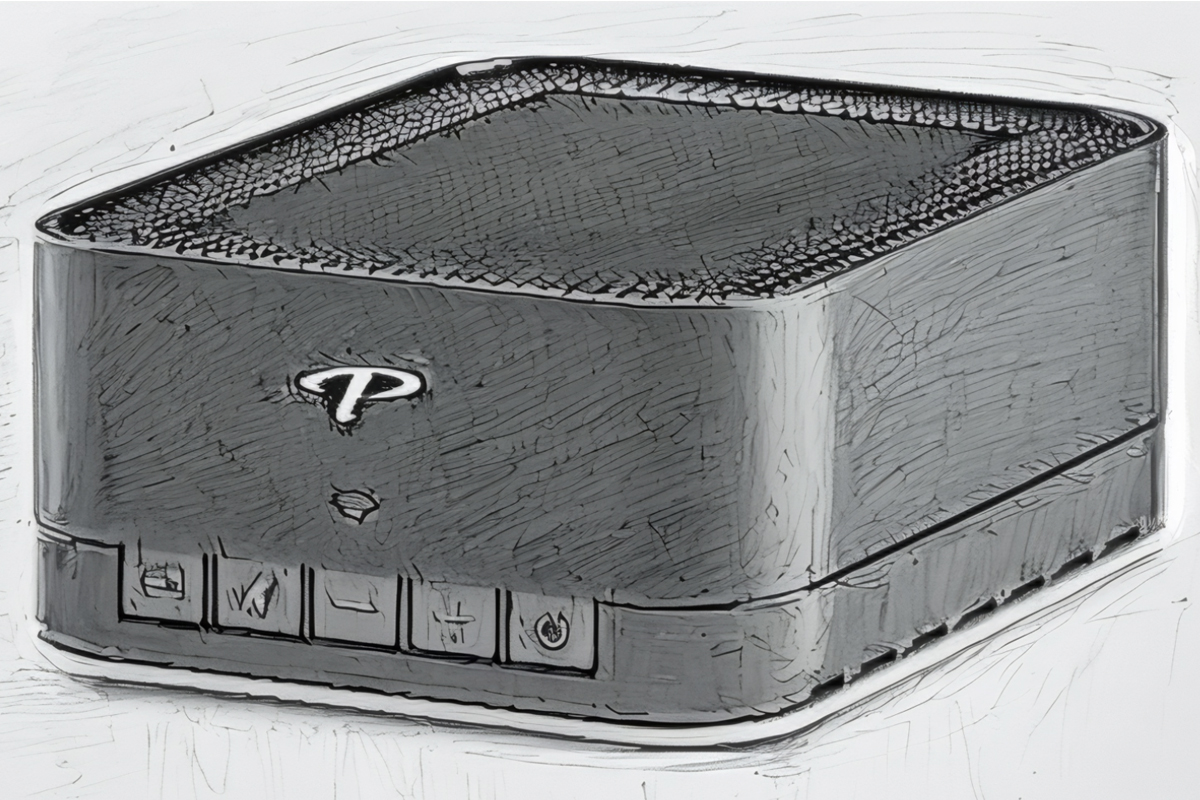
I also got into room correction, experimenting with ARC (Anthem Room Correction) on a Paradigm PW Link streaming preamp. In my heavily treated space, with support from a Rythmik Audio Direct Servo subwoofer in a custom sealed enclosure, the Dynaudios delivered the best sound I’ve experienced in any home environment. With the combination of the physical treatment and the digital room correction, the walls disappeared, and I could hear into the music in ways I never had before.
Unfortunately, I had to leave everything behind to pursue a work opportunity in the US, which meant packing only what I could fit into a suitcase. It was back to rental-apartment living for what would turn out to be almost four years. This presented another opportunity to start over with a new home system.
Back to basics
Sonos was getting a lot of hype around this time, and I was intrigued. I bought a pair of Sonos’s second-generation Play:5 speakers to replace the cheap computer speakers I’d been using to boost the sound from my laptop. These were soon replaced in turn with a set of Audioengine A5 powered speakers, not because the Sonos units were terrible, but because the Audioengines sounded much clearer and were a lot cheaper (an important consideration, as this was meant to be a temporary situation). Along with my Sennheiser HD 600s and Momentum 3 wireless noise-canceling headphones, they served as my musical conduit during that time.

Later, after moving back to Ontario, I was fortunate enough to spend the pandemic lockdown there with my wife, the Dynaudios, a Rythmik Audio sub, an ARC box with a Topping DAC, and my acoustically treated listening room. We made the most of it, sitting up late into the night listening to anything and everything, to experience it all again on that system with the lights turned low. It was magical. Until it was time to move on.
Starting over (again)
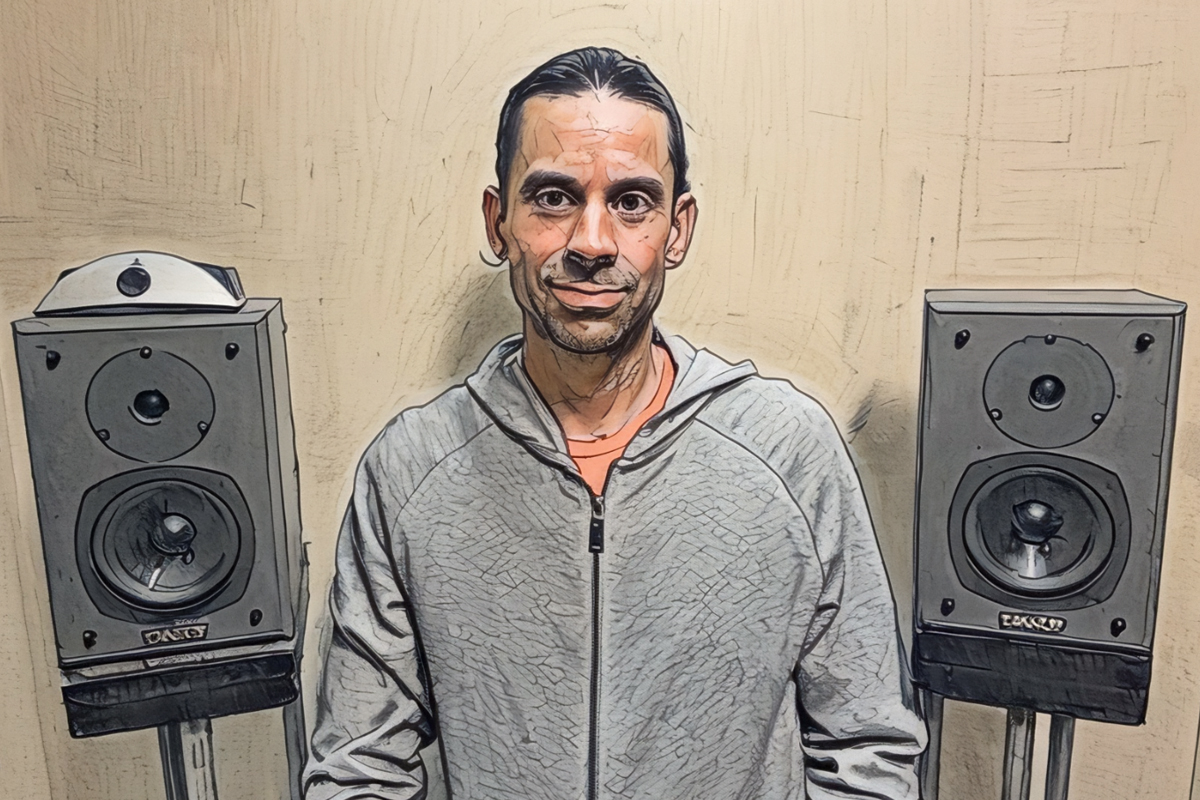
This time it was a move to Canada’s west coast for a gig testing and reviewing headphones. Once again this meant purging as many possessions as possible in order to make the move efficient and inexpensive. I said goodbye to the Dynaudios and practically everything else, except the sub that I’d built and the Tannoy speakers from the workshop, which were in rough shape so weren’t worth selling. So, the system I took with me to British Columbia included the Tannoys and one of the old T-Amps that still worked. As a source device, I picked up a WiiM Mini streamer with a Schiit Modi DAC.
When it came to replacing the Dynaudios, I was drawn to the idea of active three-way speakers, as I wanted to up my game with dedicated midrange drivers; however, anything meeting my requirements was either too large for my shoebox apartment, too expensive, or both. I ended up compromising a little, going with a pair of KEF R3 META passive three-ways, which I powered with a pair of Bang & Olufsen ICEpower modules found on eBay (something I really could have used 30 years ago!). These speakers immediately became my primary reference units, with the added benefit that comprehensive measurements, including CEA 2034 data, could be found online to offer me insights into how my subjective impression of these speakers tied in with their objective performance. That basically brings us up to date, although obviously my hi-fi journey hasn’t ended, and likely never will.
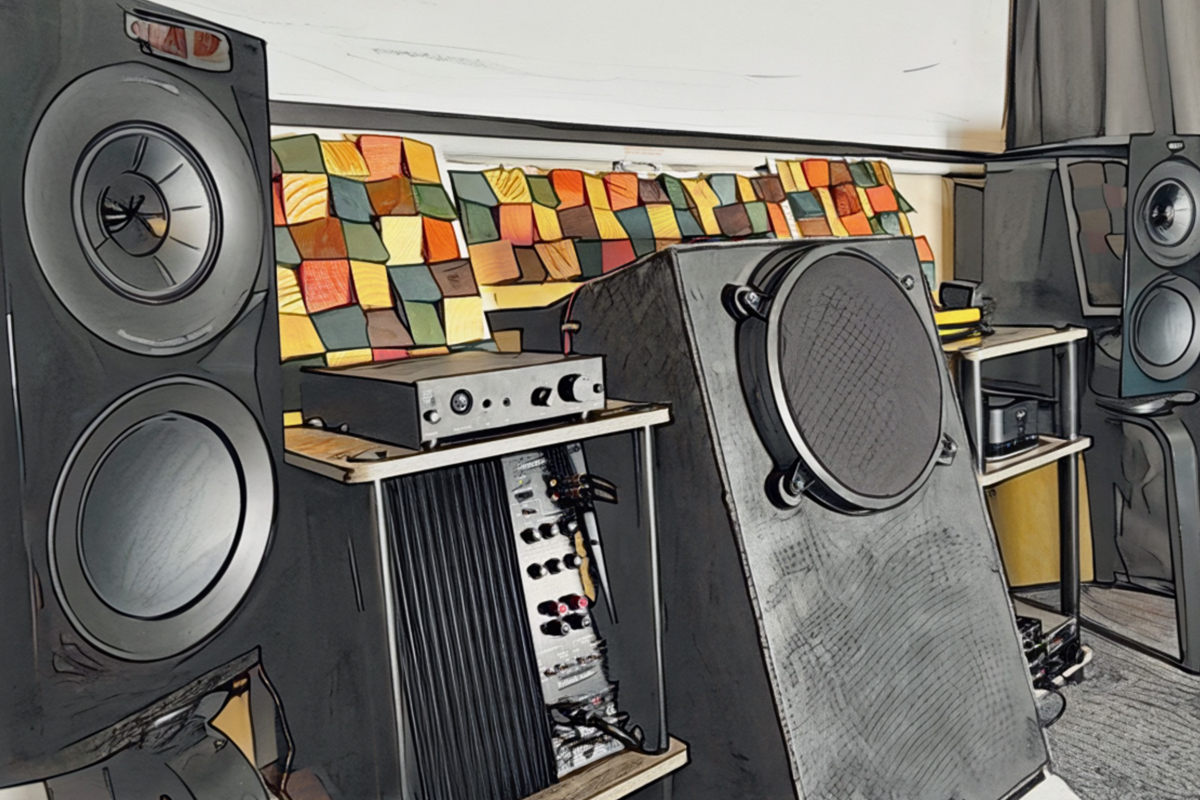
What have we learned?
So what’s the point of this long, meandering story, and how does it relate to this particular site? Well, dear reader, the point is that at many junctures along this path, whether it was building my first audio system, starting over in a new country, or needing good sound in a string of temporary accommodations, the available options usually missed the mark one way or another.
Whether it was because I was short of funds, short on space, or in a temporary living situation, putting together a big hi-fi system didn’t make sense, even though that seemed the only way to get the sound I wanted. This conundrum often led to me juggling odd combinations of components. What I really needed was Simplifi’d hi-fi, but the problem was that it didn’t exist at the time. This leads to an important question: what exactly do we mean by Simplifi?
The Simplifi philosophy
The Simplifi philosophy is about achieving high-quality sound in a way that fits seamlessly into modern living spaces. The focus is on systems that are compact, unobtrusive, and easy to use. Or, to put it another way, we’re looking for a small physical footprint that avoids as much clutter as possible, with strong appeal to those who want great sound without complexity. The KEF LSX II LT streaming active speaker system, for example, is emblematic of these ideas.
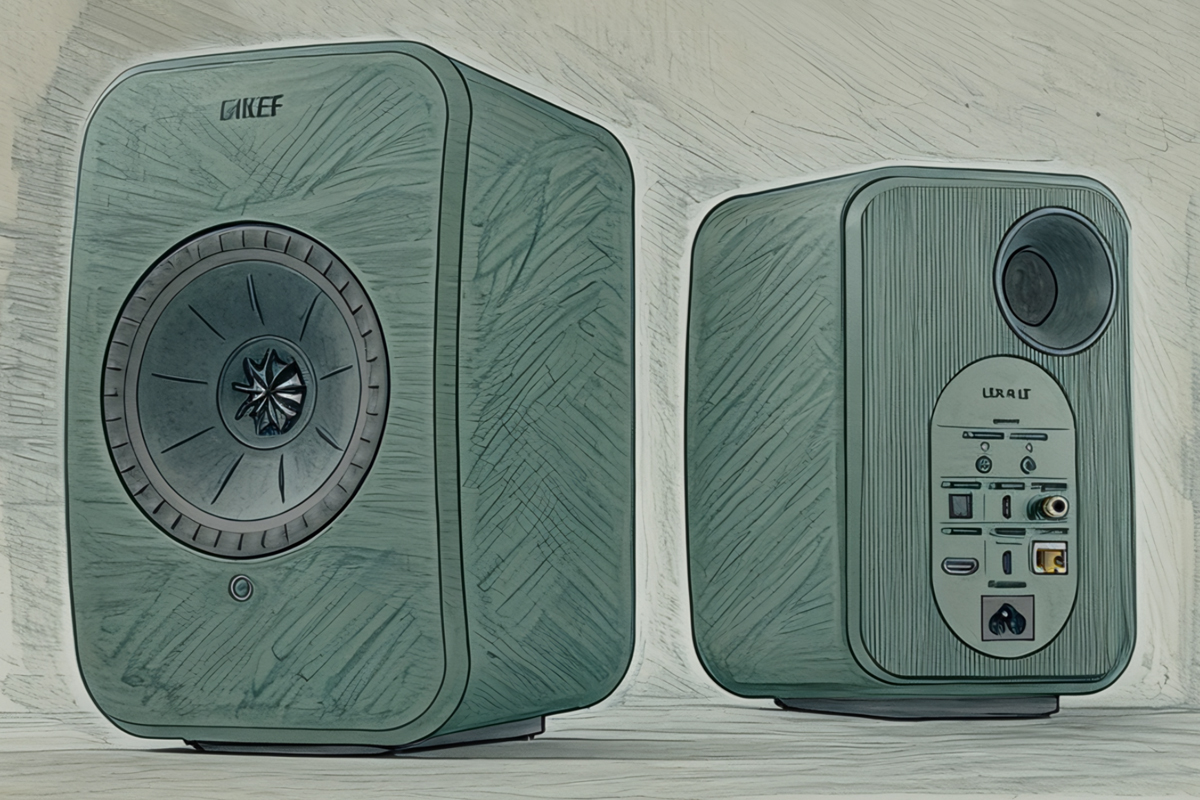
We’re talking about the evolution of hi-fi technology into a format that doesn’t require dedicated listening spaces or the time commitment of a hobby. It seeks to minimize the number of boxes by incorporating streaming services with efficient onboard amplification, and therefore also minimizes wired connections. It fully leverages DSP (for crossovers, EQ, room correction, etc.) and advanced acoustic design to minimize room interaction and maximize placement flexibility. And, of course, sound quality is vital—but with an eye on cost and value.
Simplifi’d systems are designed to integrate with daily life and décor, prioritizing convenience and aesthetics as much as sound quality. While not dismissive of audiophiles, the Simplifi philosophy is sympathetic to those who find traditional hi-fi setups, with multiple boxes and interconnects, impractical or intimidating.
By embracing simplicity and smart integration, whether through compact active speakers, wireless connectivity, or all-in-one solutions, we can enjoy high-fidelity music without the clutter and complexity of traditional systems. This approach not only respects the realities of contemporary living spaces, but also ensures that great sound remains accessible, enjoyable, and effortlessly integrated into our everyday routines.
The question you need to ask is: is music part of your life, or does it dominate your life? If music dominates your life, then focusing on traditional hi-fi, or what’s considered “high-end,” might make sense. Otherwise, welcome to Simplifi. This is going to be a lot of fun!
. . . AJ Wykes



